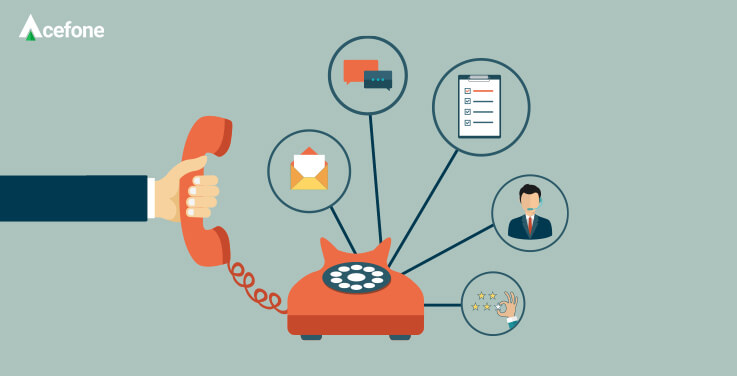Customer service is more important now than it’s ever been. In a world of uncertainty, the experience you can deliver to your clients is what makes them hold on to you, now and for the future.
There are plenty of ways in which you can invest in customer experience (CX)—for example, through a feature-rich cloud phone system—but one surefire way to ensure excellent support is by having the right person lead the way for your staff.
Traditionally, men took leadership roles in larger companies. However, there has been a shift in our business ideals and practices over the years. More women are now taking the reins in large enterprises, and very successfully so.
Let’s look at a few women leaders of the customer service industry and how their achievements are shaping this industry.
 |
Catherine BlackmoreGVP of Global Customer Success at Oracle Marketing CloudWith over 20 years of experience in customer service, Catherine Blackmoor is a powerhouse of the industry. She fuels her innovation with real-life experiences that allow her to operate a first-class CX strategy. Named one of the top 50 influencers in the industry, she has written a variety of blogs, ebooks, and whitepapers concerning customer service to help others shape their strategies. She has also held a number of prestigious roles at companies (like Salesforce) and often shares her vast knowledge through her role as a speaker. |
Catherine is passionate about turning customers into advocates for your brand. She has time and again stressed on the fact that when customer service is done right, your clientele can become your fans and biggest supporters.
They advocate your brand and become marketers rather than just buyers. In one such speech, Catherine asks, “What are you going to do to turn them into raving fans?”—a question she encourages businesses to ponder over for optimising their operations.

|
Tiffani BovaGlobal Customer Growth and Innovation Evangelist at SalesforceTiffani Bova was named one of the “Most powerful and influential women in California”, and it’s not hard to see why. Tiffani describes herself as a business anthropologist and is a well-known strategist, adviser and influencer. |
She has worked with numerous high profile companies which gives her a strong understanding of the nuances of customer engagement, so it is unsurprising that she has been awarded such a title.
Tiffani’s experience is far-reaching, and she has worked with businesses of all kinds—from startups to multinational corporations. Having delivered over 500 keynote presentations to over 400,000 people in six continents, she is highly sought-after and her expertise is coveted worldwide.
Tiffani Bova’s incredible insights can be found in publications such as Forbes and HBR, and she also hosts her own podcast, What’s Next! which explores the future of business innovation and growth. If you own a business and are looking to the future and wanting to keep innovating and developing your customer service strategy, Tiffani Bova is the person to follow!

|
Denise Lee YohnBrand Leadership Expert, Thought Leader, Keynote Speaker and AuthorDenise Lee Yohn is a customer experience thought leader who is the go-to expert for media outlets such as CNBC and FOX Business TV. She is also in demand as a speaker and consultant, is a highly influential writer and the author of bestselling books. |
Previously the VP of Brand and Strategy at Sony with contributions to Forbes, Lee Yohn’s credentials are impressive and set her apart as another thought leader to follow for anyone interested in taking their CX to the next level.
Denise takes a more personal approach when speaking or writing her books, while still challenging the audience to make real and achievable changes in their businesses. She’s a popular speaker for several high profile events.

|
Christy WyattChief Executive Officer at AbsoluteChristy Wyatt is the Chief Executive Officer of Absolute, a leading provider of cybersecurity solutions. Absolute provides more than 12,000 customers with security, always-connected visibility, and real-time intelligence. |
Christy has held executive positions in a range of leading global brands including Apple, Blackberry, and more. Her customer experience credentials are impressive and she draws on an extensive background in security and analytics and is delivering innovative solutions to customers every day.
She is one of Inc. Magazine’s top 50 women entrepreneurs of America and Information Security’s CEO of the year. As one of the Fierce Wireless’ ‘most influential women in Wireless’, it is easy to see why many people in the industry look to Christy for inspiration and guidance.

|
Annette FranzCustomer Experience Consultant, Keynote Speaker, AuthorAnnette Franz boasts almost 30 years in the customer service industry. She is the founder and CEO of CX Journey Inc., a company dedicated to helping businesses put the “customer” in customer experience and at the heart of their operations. |
Annette is also a recognised thought leader, business coach, and keynote speaker. She’s written a book titled Customer Understanding: Three Ways to Put the “Customer” in Customer Experience, which has proved to be an essential guide for businesses looking to improve their CX strategies.
Annette strongly believes that employee culture and good customer service go hand in hand. She helps businesses improve their employee culture so that the staff can deliver exemplary service to clients. She also runs workshops and consulting to give businesses the tools they need to elevate their service.
Takeaway
While these are just a few of the top women leaders in the field of customer service and customer experience, we can learn a lot from each of them. Clients should always come first and these women are blazing a trail for other businesses to follow, with innovative solutions, on how your business, whatever its size, can have top customer service.
Take the first step into elevating your customer experience with a feature-rich cloud phone system that opens up all lines of communication. Equip your staff with all the right tools and watch them shine. Call 1888-859-0450 now or drop an email at [email protected].










































